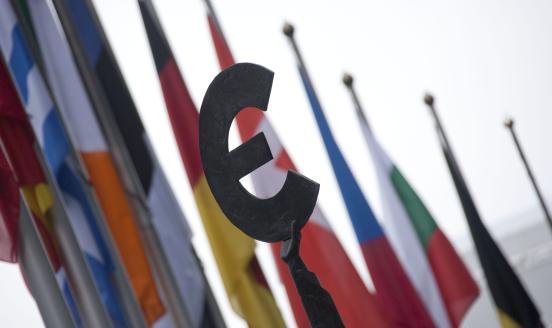The Spanish conundrum
In this article Bruegel Director Jean Pisani-Ferry puts forward the various options that Spain could use to close its yawning competitiveness gap and turn its economy around. Through competitve deflation, it can impose a wage restraint and increase competitiveness. The other options, such as through deflation or re-entering the euro rea with a devalued exchange rate, might have more straightforward results, but the repurcussions could be difficult to deal with.
Spanish wages rose by 50 percent between 1998, the last year before the introduction of the euro, and 2008. In the same period, in Germany, the increase was only 25 percent. This would not be remarkable if the wage differential was matched by changes in productivity; there is no obligation for members of a monetary union to proceed at the same pace. But this was not the case. In Spain, where construction and traditional services have driven growth, productivity growth has been less than in Germany, where industry has been completely restructured (seven percent compared to 15 percent). The result has been, in one decade, the opening up of a 30-point competitiveness gap. Even taking into account that Germany entered the euro with an overvalued currency, this gap needs as much as possible to be closed over the next few years. How can it be done?
The first method Spain could use is ‘competitive deflation’, as practiced by France during the 1980s, and Germany since 2000. This means imposing wage restraint and thus gradually closing the competitiveness gap. However, it works desperately slowly, particularly if inflation is low and productivity growth is weak.
The second method is deflation. This does not work through gradually adjusting salaries or prices, but through lowering them as suddenly and as simultaneously as possible. On paper, it looks attractive. If a government can obtain a simultaneous 10 percent cut in wages and prices, the loss of purchasing power will only be felt with imported products, which will become more expensive. The purchasing power loss would be limited to 2.5 percent in Spain’s case, because imports account for a quarter of GDP. However, this method is only really feasible for small, open economies, such as Ireland or Estonia, where cohesion is strong and there are obvious competitiveness concerns. In a large, complex economy marred by disputes over income distribution, deflation is hardly likely to be practical. In France, Laval’s deflation policy in the 1930s ended in economic failure and political disarray.
Some say there is a third way, through which the results of a straightforward deflation could be achieved by less-direct means. US economist Martin Feldstein, in a proposal aimed primarily at Greece, has suggested exit from the euro, followed by re-entry at a devalued exchange rate. But this would soon turn the single currency into an empty shell. The introduction of parallel currencies has been suggested. If it were possible to temporarily denominate contracts in a quasi-currency, say in ‘pesos’, while depreciating the ‘peso’ against the euro, everything would fall into place. But Argentina tried this, and the results were inconclusive. Lastly, VAT can be increased, and social security contributions reduced: in combination such measures tantamount to a devaluation. But there is only a limited margin for a VAT hike (Spanish VAT is 16 percent, soon rising to 18 percent).
The last possibility would be to leave the euro area. However, this would be a step into the unknown, and contracts, in particular public debt obligations, are denominated in euros. Even the announcement by a government of an intention to leave would immediately provoke a financial crisis of great magnitude because of generalised concern about the consequences of such a decision for the solvency of counterparties.
So we are back to the first method: slow and painful steps towards the recovery of competitiveness. Getting there will test the endurance of Spanish society. The European Union’s responsibility is to smooth the path, especially as Spain is not an isolated case. This implies that the European Central Bank should visibly and steadfastly concentrate on increasing inflation to two percent. Currently the risk of too-low inflation is greater than the risk posed by too-high inflation. The implication is also that the German social partners must understand that wage freezes, such as that just negotiated for metalworkers, risk making the Spanish conundrum insoluble. Neither economically nor politically would this be in Germany’s interest.
This Op-Ed was first published in Le Monde.



